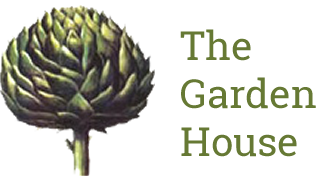Our Favourite Plants for Dry Shade
Posted:10 November 2011
Dry shade is one of the most difficult parts of the garden – here at the Garden House we are always being asked for advice on plants that will tolerate this situation.
All the plants that we are recommending come with the RHS Award of Garden Merit (AGM); that means that they have been tried and tested and have come out well thriving in dry shade conditions.
They will all need lots of watering in their first season to settle them in and you can also help by mulching well with compost and manure or bark chippings. You can even plant through cardboard water well first to make it more flexible and then using a knife, cut holes in the cardboard for planting through. Cover with bark mulch to weigh the cardboard down and to make it look more attractive.
Our favourite dry shade plants:
Brunnera macrophylla a member of the borage and comfrey family, it is a really good weed suppressant. It has rather rough, heart-shaped leaves above tough, slowly spreading roots the effect is rather like a rough-textured hosta, but unlike hostas doesn’t get eaten by slugs and snails! Known as the perennial forget-me-not, it produces very dainty pale blue flowers. The silver form called ‘Jack Frost’ really lights up a shady corner and is lovely cultivar. Height 45cm (18in)
Dryopteris filix-mas I’m always surprised that this plant is tolerant of dry, shady conditions. If like me you have problems remembering what fern goes where, the clue is in the name DRYopteris! It is known as the shuttlecock fern and once established, its finely dissected widely splayed fronds make a really good contrast to broader foliage. You have to wait for a while for it to reach maturity but it is worth the wait. Two favourite AGM cultivars are Cristata and Grandiceps Wills both have crests at the tips of their fronds and of their leaf divisions. Height 1m (39in)
Euonymus fortunei ‘Emerald ‘n’ Gold’ the poor old Euonymus always seems to get a bad press – maybe because it is often used in places where it doesn’t get looked after very well. It is a great winter plant and when the cold gets to it the small dark leaves, edged in gold, develop a lovely pink tinge. It can be pruned hard in spring and clipped to shape, or if left will also climb walls. It also looks good in containers in a shady position. Height 50cm (20in)
 Epimedium x perralchicum evergreen epimediums, commonly known as bishop’s mitre, are good in dry shade, this one makes a dense clump. This form was found at Wisley, RHS gardens in the 1930s. It is in the same family as Berberis and Mahonia, and has the same yellow roots as these two cousins. In spring sprays of very dainty, dancing, pale yellow flowers cover the foliage. It makes a good weed-smothering hardy perennial cover which is attractive all year. Height 40cm (16in)
Epimedium x perralchicum evergreen epimediums, commonly known as bishop’s mitre, are good in dry shade, this one makes a dense clump. This form was found at Wisley, RHS gardens in the 1930s. It is in the same family as Berberis and Mahonia, and has the same yellow roots as these two cousins. In spring sprays of very dainty, dancing, pale yellow flowers cover the foliage. It makes a good weed-smothering hardy perennial cover which is attractive all year. Height 40cm (16in)
Narcissus ‘Jack Snipe’ now is bulb planting time and some of the small narcissi are brilliant in dry shade. ‘Jack Snipe’ has strong stems and small flowers and look great gown in clumps, add plenty of compost before planting to give them a good start.
Geranium macrorrhizum White-Ness this is a lovely cultivar of the hardy geranium. It has a very interesting aroma, also has rather good autumn colour – and it is sometimes evergreen here in Brighton! It flowers May and June when it’s white flowers light up the shade, it’s a really good form. Height 30cm (12in)
Lamium maculatum ‘Ghost such lovely plant, its green-edged silvery foliage really catches the eye so ideal for dry shade. This is a very vigorous growing form. Height 30cm (12in)
Iris foetidissima the ‘stinking iris’ is a great perennial for tough situations (fear not, it only smells when you crush the leaves!). The heavy-duty long grass-like evergreen foliage is a good feature, and although the flowers are not terribly exciting I love the orange fruits, held in fat pods, that appear in autumn and last for ages. Height 45cm (18in)
Vinca minor Argenteovariegata I love Vinca, its windmill-like flowers are very delicate and it comes in so many different colours and forms. Great for suppressing weeds as it forms a very dense carpet. If you cut it back in March with shears it will produce lots of flowers on the side shoots. It often tends to get neglected but with care it will produce some lovely pale purple flowers in spring, and the leaves are evergreen. Height 10cm (4in) NOTE: Vinca major is best left to larger gardens as it can be quite invasive!

